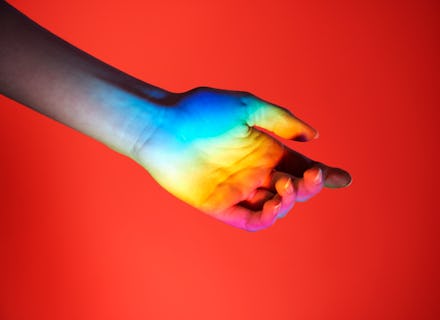"Straight" people might be more queer than they realize, according to a new study

Millennials and Gen Z-ers are all about shaking up the binary categories of sexual orientation that have flattened the human experience for far too long. Even many of those who identify as straight understand sexuality as continuous and fluid, at least in an abstract sense — although learning more about these concepts could make them hit much closer to home. A new study suggests that reading about the sexuality spectrum might make you realize that — surprise! — maybe you’re not that straight after all, EurekAlert reported.
The paper, published in Scientific Reports on August 16, consisted of two experiments. In the first experiment, 180 university students, all of whom identified as straight and cisgender, were randomly assigned to read one of the three articles: One was about the growing body of scientific evidence supporting the notion of sexual orientation as a spectrum (not only straight or queer, but everything in between). Another described sexuality as existing in one of three forms — heterosexual, homosexual, and bisexual. A third looked at the effects of global warming, without mentioning sexuality at all.
After the experiment, participants assigned to read the article about sexuality existing on a spectrum were 28% more likely to identify as non-exclusively heterosexual than those in the control group — that is, those assigned the article about global warming, EurekAlert said. And among those who read about the sexuality spectrum, 19% reported they were more down for queer sex. In fact, the percentage of students who identified as non-exclusively heterosexual more than quadrupled after this experiment.
In the second experiment, 460 cis, straight-identifying adults aged 18 to 83 were randomly assigned to read an article about sexuality as existing on a spectrum, sexuality as one of three discrete orientations, sexuality as fluid, or sexuality as stable. A fifth, control group read a not-so-sexy article about the anatomy of trees. After the experiment, those assigned to read about the sexuality spectrum and sexual fluidity were 36% and 20.7% more likely, respectively, to identify as non-exclusively heterosexual than the control group.
While it might seem like reading about the nature of sexuality changed people’s sexual orientations, the study’s lead author, James Morandini of the University of Sydney, believes it more likely shifted their understanding of them.
“I think our study may have changed how people interpreted their underlying sexual feelings,” he told EurekAlert. “This means two people with identical sexual orientations could describe their sexual orientation quite differently, depending on whether they have been exposed to fluid or continuous ways of understanding sexuality.” Maybe some of the participants were not-totally-straight the whole time, but only after reading articles on the sexuality spectrum or sexual fluidity did they realize that was even a thing.
Ilan Dar-Nimrod of the University of Sydney, the study’s senior author, told EurekAlert he’s not surprised by the results, “given that ‘non-exclusive heterosexuals’ (as opposed to bisexual, gay or lesbian individuals), although being the biggest same-sex attracted group, are not well captured in our society’s representations and even vernacular.”
In other words, as limiting as labels can be, something pithier than “non-exclusive heterosexuals” might help normalize same-sex attraction, which the study suggests is probably way more common than we once thought. The future really is queer — some folx just need the additional vocabulary to articulate that they might be, too.